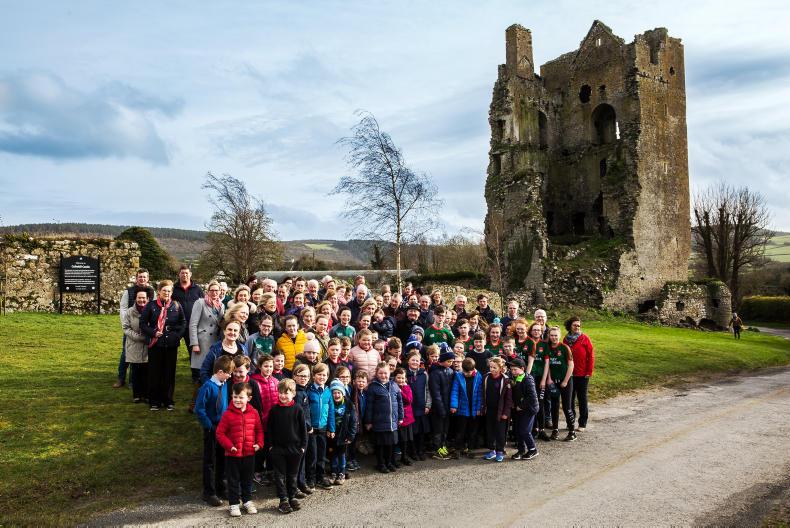Having an overall committee – a community council – has made it easier for the residents of Cullohill, Co Laois, to avail of bigger public grants to develop their village.
While there are 15 clubs and organisations busy in the area, setting up a community council three years ago, with a representative of each organisation on its board, has meant three things: that there is no duplication of effort, that clubs don’t feel they are working in isolation and, most importantly, that they have more clout when it comes to communicating with funding agencies.
“It wasn’t that the community council was taking over in any way, but we felt that together we had more power and capacity than individual groups did,” says handball club chairperson, Tony McGuigan.
The 15 clubs in the village range from all the sports clubs – with handball a Cullohill specialty – to the likes of Tidy Towns, active retirement, bridge club, youth club, flower club, ICA, walking club and more.
The trigger for this village’s recent development occurred in 2016 when some residents realised that LEADER and Laois County Council had identified Cullohill as a village that hadn’t availed of public funding.
“We then reversed into LEADER,” treasurer of the community council, John Scanlan, says.

“We initially met to discuss street lighting, but being aware of this report – and that there were funds that could be accessed – we sought a meeting with LEADER. They wanted a plan, so we set about working on that.”
The Cullohill community development plan, prepared by a consultant, was launched in February 2019 and provides project signposts for the future.
The village proving its ability to raise matching or supplementary funding for grants has been important and fundraising events geared towards that have been many and varied.
“We held an auction first and had a cookery demonstration given by Rory O’Connell, whose family is from the village, for example. We had a big Christmas food event the next year sponsored by Bord Bia and then planned the Folly Festival,” says secretary Marian Mahony.
The Folly Festival was a big undertaking and will happen again on the weekend of 19-20 July 2019.
Villagers are blessed with an ideal space for holding this kind of event, with Cullohill castle ruins and Nancy Phelan’s nearby walled garden providing an atmospheric backdrop and space for the event, where 1,500 people gathered last summer.
Hall upgrade is underway
Currently their biggest project is under way – a €222,000 hall upgrade that will see LEADER providing 90% of that funding.
Along with the major upgrade of the hall (a former school), now at tendering stage, the handball club is further developing its remarkable indoor handball alley and the Folly Festival is getting infrastructural funding for marquees to weather-proof the event.

The Folly Festival earnings have generated income that has become “a very important cash cow to facilitate grant applications” council members say, enabling them to apply for bigger grants.
With 400 people living in the area there is huge scope for development in the community.
“But the most valuable asset is the community itself,” adds John Scanlan.

“If there’s a job to be done people get behind it here,” he says.
He sees upgrading the community hall as a vital project.
“When it’s insulated it’ll be more comfortable for people and there’ll be an energy saving as well. This was built in 1985, but every ‘spec’ on buildings is higher now so you have to bring it up.
“No one is going to leave a warm house to come here to a cold hall for any event.”
Study hub initiative
One of the council’s innovative ideas has been the setting up of a study hub in the hall at weekends.

On the challenging side, the village is still waiting for a good broadband service, but mobile coverage is good because of the nearby motorway.
As I leave after the photo in the Folly and a cup of tea in the hall, card tables are being draped with purple cloths ready for the bridge club’s arrival later on – proof that the village of Cullohill is no dummy when it comes to providing variety and quality of life for those who live there.
Top tips from It Takes A Village
It takes a village: where the border splits a village in two
